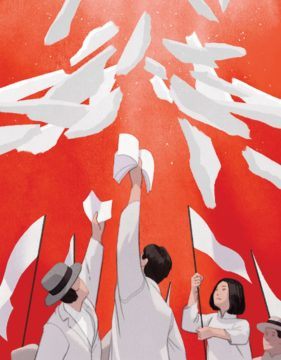 Thomas Meaney in The New Yorker:
Thomas Meaney in The New Yorker:
International conferences are notoriously difficult to organize, all the more so when the aim is global revolution and the world’s empires oppose your agenda. When, starting in 1919, Vladimir Lenin convened the first congresses of the Communist International, some Bolsheviks were disappointed by the characters who turned up—old-fashioned socialists, trade unionists, and anarchists, coming with false papers, in disguise, under aliases, and all apparently expecting hotel rooms. The Russian revolutionary Victor Serge observed, “It was obvious at first glance that here were no insurgent souls.” Lenin kept a blinking electric light on his desk to cut meetings short. But one of the arrivals made an impression. “Very tall, very handsome, very dark, with very wavy hair,” Serge recalled. It was Manabendra Nath Roy, an Indian who was a founder of the Mexican Communist Party. When ducking imperial authorities, he used a method described by a comrade: “If you want to hide revolutionary connections . . . you had better travel first class.”
Roy had cut an unusual path to Moscow. Born into a Brahmin family in West Bengal in 1887, he left India in his twenties on a series of missions to secure funds and weapons for an uprising against the British Raj. During the First World War, a group of Indian anti-imperialists wanted the Germans to open a second front against their common enemy. But Roy’s parleys with contacts in Java, China, and Japan yielded almost nothing. In Tokyo, he resolved to press onward to the United States: “I decided to take the bull by the horn, pinned a golden cross to the lapel of my coat, put on a very sombre face, and called at the American consulate.” Disguised as “Father Martin” and having, he said, “reinforced my armour with a morocco-bound copy of the Holy Bible beautifully printed on rice-paper,” Roy arrived in San Francisco in 1916.
More here.
